The Ugly Duckling!! (for now)
It once was, and will soon be, incredibly handsome!!
While beauty is subjective, most sources consider the Wood Duck to be one of prettiest ducks in North America. Its plumage comes in vibrant colors of iridescent green, blue, purple and chestnut with intricate patterns on its feathers. The crested head sits on a blocky body and its red eye and multicolored beak complete the look. I saw the male Wood Duck below in San Diego in 2016.
A few weeks ago at Sweetwater Wetlands, I caught a glimpse of a male Wood Duck. It remained mostly hidden in a pond behind a veil of reeds. This duck had the typical red eye and bill along with the blue wing patch, but the rest of the duck was very plain and splotchy looking. This look is referred to as "eclipse plumage". Eclipse Plumage is the transition many male ducks go through after breeding season when they molt, shedding their old worn out feathers and begin to replace them with new feathers.
I returned to Sweetwater last week and found the same male Wood Duck in the exact same area. This time, he was swimming and feeding more out in the open. Unlike most other birds, many male ducks like Wood Ducks molt all of their flight feathers at once. Because of that, they are unable to fly during that short period and they are more vulnerable to predators. This drab "eclipse" plumage allows the males to be more camouflaged while they are growing out their new feathers.
It is likely that the Wood Duck I saw was just on its migration route south for the winter. This stopover at Sweetwater is where it will remain until it grows in its flight feathers. Tucson is home to a few Wood Ducks each winter. Whether this duck remains here or heads south is yet to be determined. Below is what a mature Wood Duck in breeding plumage looks like. I took this photo at Sweetwater in February, 2018. There often has been a Wood Duck or two at Sweetwater each winter.
Swimming through duckweed, today’s duck at Sweetwater has a ways to go before it becomes a handsome duck once again.
In February, 2019, I was on a trip to Skagit Flats in Washington State. I saw a few Wood Ducks there. This male was walking along a wooden fence rail directly towards me. The pattern of its bold facial plumage is striking. The chestnut feathers on his chest show incredible intricate patterning in white.
Below is a front facing view of the current eclipse Wood Duck to compare to the duck in the shot above. Although the bill, eyes, and top of its head look similar, the rest of the Wood Duck is very, very different.
The Wood Duck remained in the company of a small group of Mallards. The male Mallards were also in eclipse plumage, but their in-between plumage was not as startling to me as was that of the eclipse Wood Duck.
It is common to hear about the "changing of the leaves" during autumn, but we also can witness the changing of the duck feathers! To learn more about Wood Ducks, visit their AllAboutBirds pages.


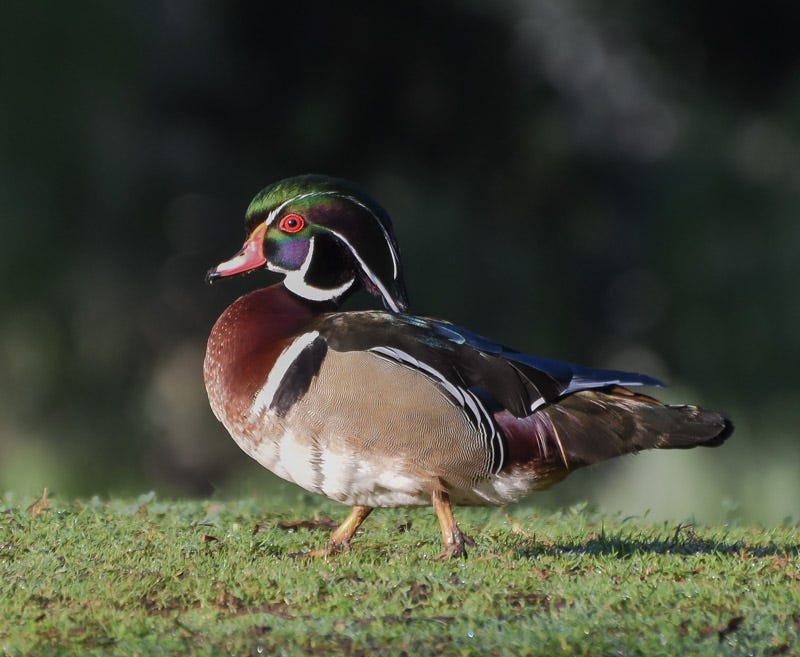
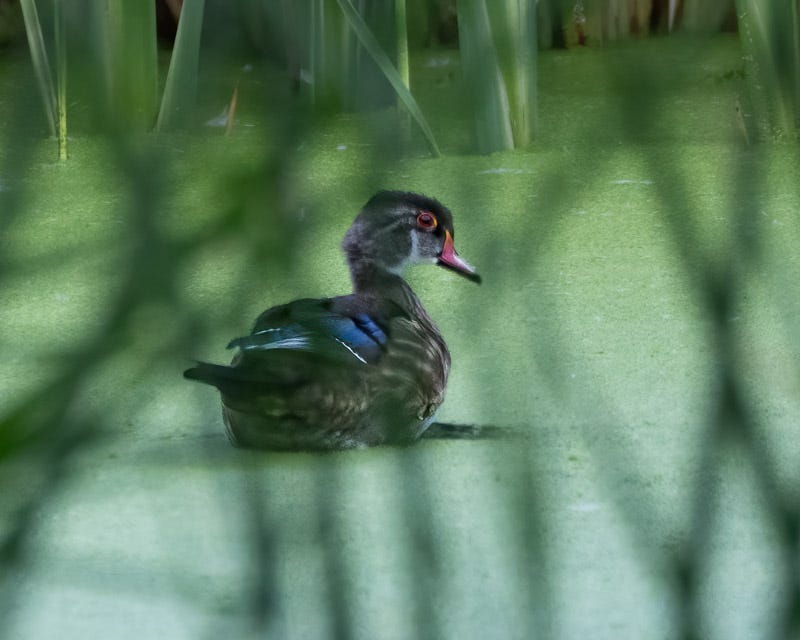
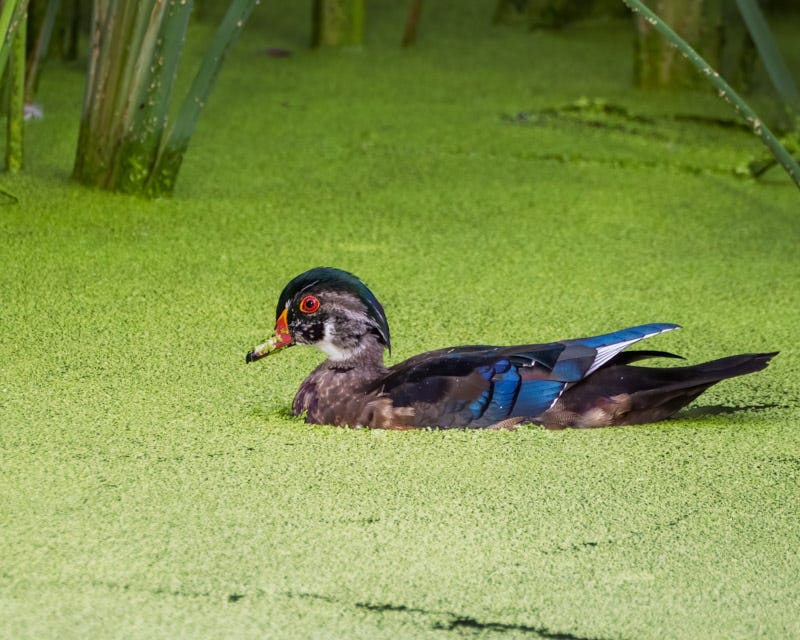
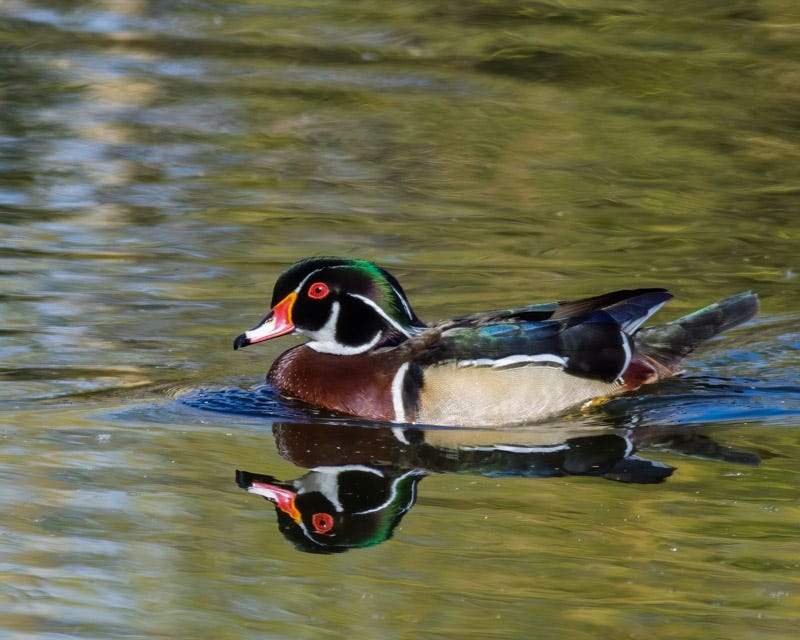
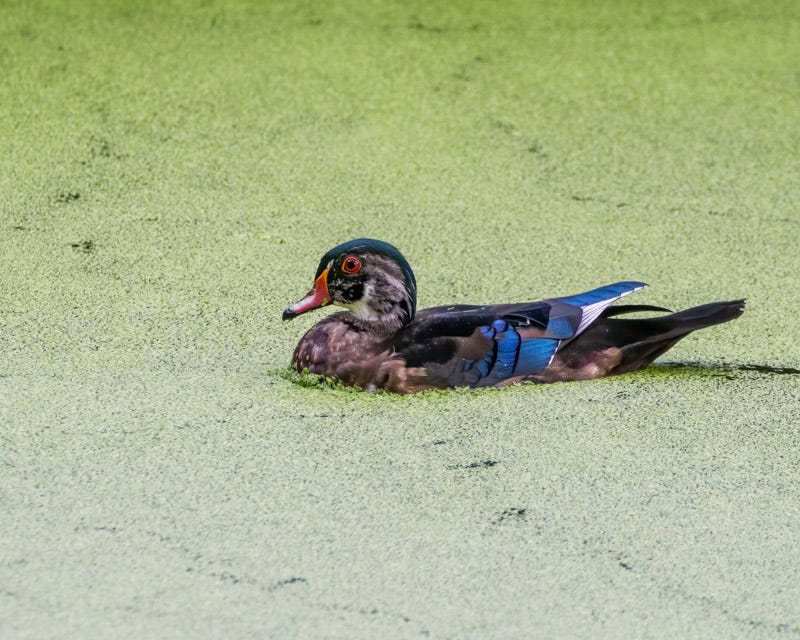
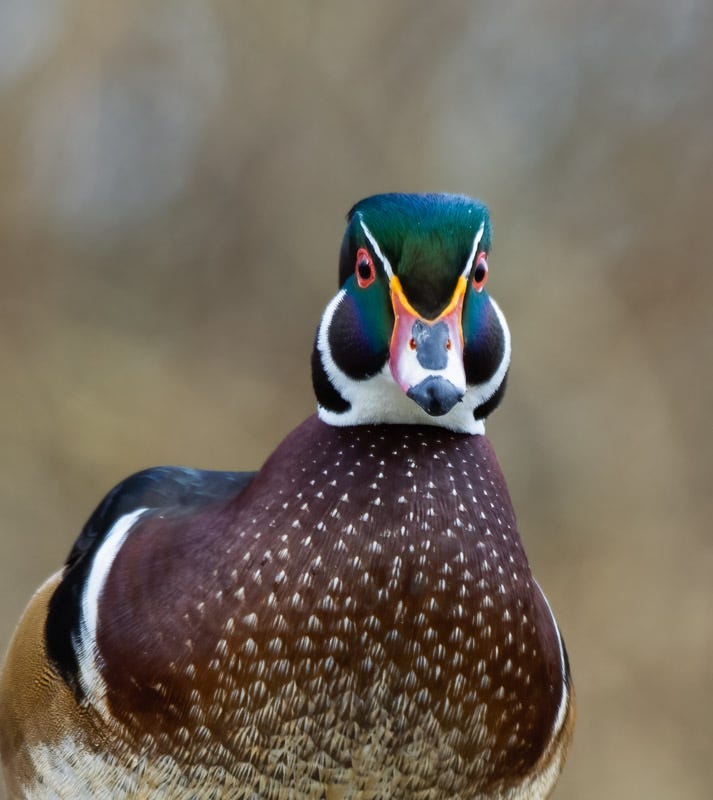
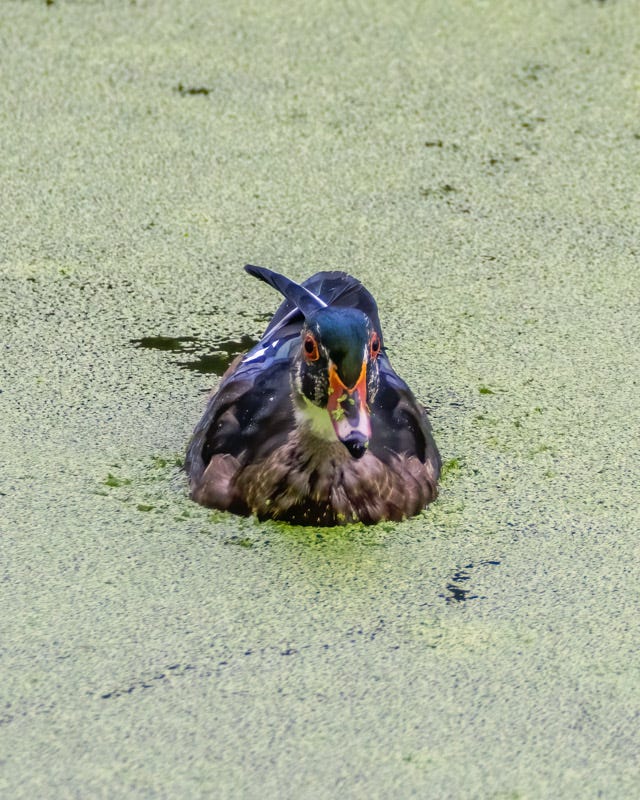

Beautiful birds!
Great post, great pix.